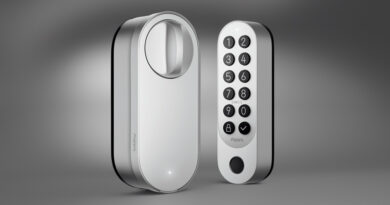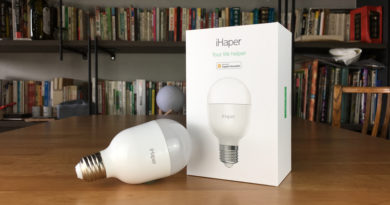Apple TV 4K (review)
The latest iteration of the Apple TV is last year’s Apple TV 4K, which as the name blatantly indicates, is capable of streaming 4K content from various sources, including iTunes, Amazon Prime, Netflix, and a few other 3rd party cable providers.
this is the 5th gen Apple TV, with the 4th Gen being the Apple TV 4, which is only capable of streaming upto 1080p. Apart from this major functional difference, they are in fact fairly similar, and on the outside pretty much identical.
The 4K has a more powerful GPU to cope with 4K content, and is also of benefit when it comes to games on the Apple TV, but also generally improving the overall smoothness of the UI and background tasks.
The main difference you will notice ‘off the ba’t is the included Siri remote which now comes with a raised white ring around the menu button. This is meant to aid you when holding the remote in (presumably) dark scenarios.
One other perhaps less immediately noticeable, but nonetheless major alteration is the removal of the mini USB input at the back. This wasn’t something that the average consumer would ever be able to use, so it’s not a big deal to the majority. Aside from that, the ethernet socket has has a speed upgrade, now going from 10/100 megabit connection to a 1 Gigabit connection.
If you don’t have a 4K TV you can still use and enjoy the Apple TV 4K, as it’ll detect the TV’s resolution capabilities automatically. It’ll generally be faster overall as well, although as a person owning both of these models (besides a very creaky 2nd gen Apple TV), and using them on 1080p TVs, I really can’t see any noticeable difference.
As a Hub
So, other than the obvious reason for having an Apple TV to stream movies, TV shows, look at photos and play games etc. What about the ‘hub’ side of things? Well if you are getting into home automation, you’ll soon notice that some companies proudly declare that their product need no hub. This means that they generally connect to you wifi network which then will allow you to control them from a iPhone, iPad or iPod that’s also connected to the same network.
This is great if you don’t really want an Apple TV, but what the hub does allow is for remote access to these devices. So, in the case of devices with an emphasis on security, like cameras, motion or door sensors, without a hub, there’s no way for these devices to let you know if a door has been opened or movement has been detected if you’re out of the house (as you’re no longer connected to the same network, basically). So, you’re not notified of these things, but having the hub (Apple TV in this case) gives you that connectivity. Putting that to one side, remote access also allows you to activate smart devices remotely too.
As an example, you might be coming home from a long day at the office and it’s a very hot and stuff trip back home on the bus. With remote access you can easily instruct your AC to turn on and set the living room to be nice and cool by the time you return, and perhaps with a smart plug connected to a coffee machine, you could send a trigger to the smart plug to turn on a few minutes before you arrive, ensuring that a hot pot of coffee is waiting the minute you step in the door.
This is essentially what a hub does for you – allow remote connectivity from anywhere in the world. Personally speaking, we have a main apartment we rent in the city, but we own an apartment in another city for getting away occasionally, and it’s geared up with HomeKit devices, an Apple TV 4 and a camera. so I know if someone has entered the property when they should, by way of a door sensor and a motion sensor, and as I’ve got the hub, I’ll be notified immediately. Better still, when we do want to get away, as mentioned before, I could set the air con to cool, and arrive with mood lighting and a hot coffee waiting for us after a two hour drive.
Can’t be bad!




